Superhet Radio History
The superhet radio history tells how this type of receiver was born, growing out of some early observations, being developed and then remaining unused for some years before becoming the main type or receiver.
Radio Receiver History Includes:
Radio history / timeline
Radio receiver history
Superhet radio history
Classic vintage radio receivers
Although the superhet radio is now one of the most widely used techniques in radio receiver technology, it has not always been so. It took a number of years for it to be invented, but even after its invention, there was a period when it was not at all widely used.
As the need for more gain and selectivity became apparent, so the need for the superhet radio was seen, and its used increased significantly, becoming the dominant type of radio receiver.
Now the superheterodyne radio receiver is used in many areas, providing effective service and performance.
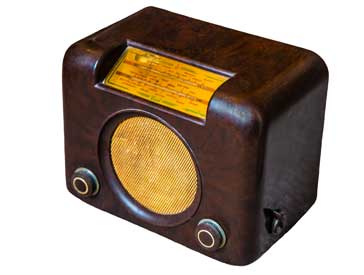
Superhet history beginnings
Apart from the discovery of radio itself, possibly one of the first major milestones in the invention of the superheterodyne radio was the discovery of the action of beat notes with radio frequencies.
In 1901, Canadian engineer, R A Fessenden discovered that improvements in wireless signalling using Morse could be made by transmitting signals in such a way that their combined effect produced the required audio signal at the receiver. To achieve this he transmitted two signals that differed in frequency by a small amount. In this way, a beat note was produced when the signals were received.

In this circuit, two coils, L1 and L2 were wound round the common core, C. Coil L1 was connected to the aerial and the earth while L2 was connected to the local oscillator O which had a variable frequency. Incoming oscillations on L1 would be superimposed upon the oscillations supplied from the oscillator via L2 and the resultant beat or difference frequency was brought within the audible range by adjustment of the oscillator and the resultant signal then actuated the detecting telephone earpiece D.
The idea was a head of its time and remained dormant for a few years. Then in 1910 some transmission tests were carried out between two American cruisers and the radio operator noticed that the received signal strength greatly increased when the ship's transmitter was in use. This occurred even though the difference in frequency between the transmitter and the received signal was above the audible range.
Further investigations took place and a far more sensitive heterodyne receiver was developed. In this new receiving set-up the static telephone was replaced by a rectifier and headphones.

In this receiver the inductor L1 is the antenna loading coils and L2 couples the antenna circuit to L5 so that the signal can then be presented to the rectifier, D. The capacitor C1 tunes the incoming signal as it resonates with L5.
The oscillator O is tuned using C2 so that the right oscillator signal is generated to beat with the incoming signal. This signal is coupled via L4 and then L3 to the antenna circuit. It then combines with the incoming signal and in the diode D it produces a beat note.
The circuits L2 / L4 and L3 / L5 are not magnetically coupled - they are separate RF transformers.
The heterodyne receiver showed itself to be far more efficient than the other methods used at the time. In 1913 tests were carried out between Arlington Virginia and the Naval ship, Salem and a range of 6400 miles was achieved. During these tests the heterodyne method of reception not only proved to be more sensitive, but it was also far superior under bad atmospheric conditions.
Valves / tubes start to be used
The next stage in the superheterodyne receiver history came about as thermionic valves / vacuum tubes started to be used in more ways.
Up until around 1913, vacuum tubes / thermionic valves had only been used as rectifiers and after many years as an amplifier because their operation was little understood. To generate a steady radio frequency signal an arc generator such as a Poulsen arc generator or a high frequency alternator would be used. These were both large and very expensive. The thermionic valve / vacuum tube was less expensive (although still costly for many uses) and much smaller and therefore offered many advantages
It was in 1913 that the thermionic valve was first used within an oscillator. The two people credited with this are G Arco and A Meissner who worked for Telefunken in Germany.
As often happens a number of people working in similar areas invent the same thing at around the same time. Working independently in the USA, Irvin Langmuir produced a valve oscillator shortly after Arco and Meissner filed their patent.
Towards the end of 1913, Captain H J Round developed what he termed the autodyne receiver, and this provided another stepping stone in the superhet history.
This circuit uses a single vacuum tube / thermionic valve to undertake a variety of functions: it generates the high frequency oscillations, it superimposes them onto the incoming received signals, and then rectifies the resultant signal. In this way it effectively becomes a single valve radio.

This heterodyne approach was not just confined to use as a final demodulator, it could also be used as a mixer. It amplified the signal and then acted as a mixer, converting he incoming signals to another frequency. When the final superheterodyne radio receiver was produced, this circuit was adapted for use as a self oscillating mixer. By acting in this way it meant that one valve or tube could be used where two might otherwise have been needed. Especially in the early days of wireless before the 1930s when valves were much cheaper, this saved considerable cost.
Early WW1 developments towards the superhet
The next major steps in the history of the superhet radio came about as a result of the First World War. Wireless technology was starting to be used increasingly by both sides, and new methods of improving gain and selectivity were urgently needed.
On the allied side; H J Round, M Latour and later Edwin Armstrong and then on the German side, W Schottky undertook considerable research into research of receiver selectivity and amplification. Tuning at radio frequencies was relatively broad, and if several stages of tuning were used, this created problems with ensuring they all tracked at the same rate. In terms of amplification, it was found that the valves or tubes of the day only performed well at low frequencies. At higher frequencies they lacked gain and would easily burst into oscillation. Any frequency above about 500 kilocycles / second (kHz) created major problems.
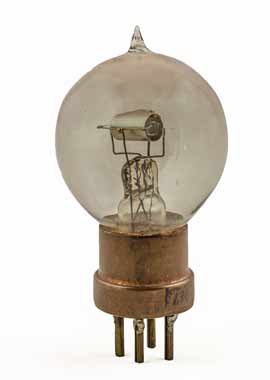
The major issue was the anode grid capacitance that was an inherent part of the valve / tube.
However, both Round and Latour were able to produce high frequency amplifiers that were relatively successful. Round even produced a low capacitance valve in 1916 where he used a top cap in the valve rather than the base for one of the connections.
He also used transformers made of high resistance wire to help suppress the oscillations, and Latour used fine iron cores in high frequency transformers that had the effect of increasing the resistance of the circuit, thereby helping to suppress the oscillations.
Lucien Levy's conversion radio
The first step in this development was taken by a Frenchman named Lucien Levy. His development provided to be a major milestone on the history of the superheterodyne radio receiver. He was investigating ways in which receiver selectivity could be improved, particularly to reduce the effect of atmospherics.
Levy’s idea was to convert the signals down to a frequency where the wanted signals could easily be separated from any interfering stations and atmospheric noise before being amplified.
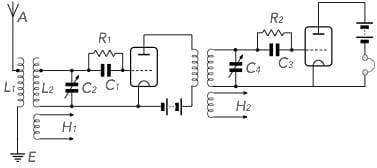
The receiver used a first heterodyne that converted the signals down to a frequency where they were passed through a variable frequency filter and if required an amplifier before a second heterodyne stage was used to convert the signals down to audio. This was done because the receiver was primarily intended for the reception of telegraphic signals.
A further advantage was that the gain of valves was considerably greater at the lower frequencies after used after the frequency conversion, and there were fewer problems with the circuits bursting into oscillation - a significant issue with the early valves that were used. The idea was very successful, and even though it did not totally eliminate interference as Levy had hoped it was a considerable improvement over previous receivers. However Levy’s heterodyne receiver was not the superheterodyne receiver as understood today because his one still retained the idea of a variable frequency filter at the intermediate frequency stage, even though this was at a lower frequency than the incoming signals. However his receiver is the first recorded radio receiver that used the basic superheterodyne principle.
Armstrong's superheterodyne radio
The idea for developing a receiver with a fixed intermediate frequency amplifier and filter is credited to Edwin Armstrong.
When the Americans entered the conflict in Europe in April 1917, they sent over an expeditionary force . Major Edwin Armstrong was attached to this and he quickly became aware of the poor performance of receivers.Unaware of the work of Levy and some others, Armstrong set about investigating the issues and associated with the lack of sensitivity and selectivity in the radio receivers of the time.
Armstrong believed that the issues could be solved if the incoming signals were combined with a locally produced high frequency signal to produce a beat signal.
He thought that instead of the beat being audible it would be above the audio range, but at a frequency where the valves of the day could amplify the signals effectively and also produce an improved form of filtering, as this could be achieved on a fixed frequency where the filters could be pre-tuned and left set during operation. As several filters were used, the fact that they did not need to be changed as the radio receiver was tuned was a considerable advantage.
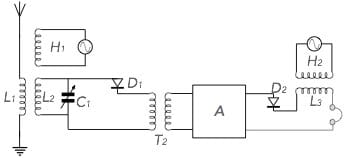
With the Division of Research and Inspection of the Signal Corps of the American Expeditionary Force, Armstrong built an eight vale of eight tube radio. It consisted of what are described as a first detector, heterodyne, three stages of intermediate frequency amplification, second detector and two stages of low frequency amplification.
Whilst the receiver worked and performed much better than any others, it came just as the armistice was signed, and the need for the radio considerably reduced. Nevertheless Armstrong applied for a patent covering his ideas on 30th December 1918.
Walter Schottky’s superhet
Although major strides were being made into receiver technology within Germany. The same issues and problems were being faced here as well.Walter Schottky, part manager of the Siemens Laboratory, was investigating the issues of reception and he is quoted as saying:
. . the incoming oscillations could be linearly converted like ordinary heterodyne reception into a lower frequency wave, easily amplified, by causing the first receiver valve to oscillate at a frequency giving in audible beats when receiving the incoming frequency.
Schottky investigated the basics of the superheterodyne concept, even giving ideas about how the mixer valve should operate.Notes of his investigations were published in the Siemens magazine: Journal of the Schwachstromkabel Laboratotium between 25th February and 16th March 1918. He then filed for a patent for the idea on 18th June 1918. Despite filing for a patent, Schottky was unable to develop the idea, possibly because of more direct work being required for the war effort. As a result the idea was left un-developed.
The diagram of the receiver in Schottky’s patent application is almost identical to that of Armstrong’s.
Despite the fact that Schottky applied for his patent before Armstrong, it is Armstrong who is credited with its invention. He developed the idea first and only applied for the patent after the war. In addition to this, Armstrong actually built and demonstrated the concept, making a working superhet radio.
Superhet gains acceptance
It took many years before the superhet was widely used. Superhet radio history records that in the early 1920s there were few stations transmitting and little interference was apparent and the superior performance of the superhet was not required. Also there were a number of issues with the superheterodyne radio at this time:
- Directly heated valves / tubes required batteries: At this time the valves that were used were all directly heated - the heater and cathode were one and the same. This meant that several batteries were needed for each radio, and they were costly and space consuming. It was only when directly heated valves were used that a single mains transformer could be used with one winding for the heaters and another winding to supply a rectifier that would then supply the high tension, HT voltage for all the valves.
- Valves / tubes were costly : Initially valves were very costly and this meant that radios needed to focus on using the minimum number of valves, and as a result crystal sets tended to be used for most broadcast reception in the 1920s
- RF and oscillator tracking was an issue: Initially the RF stages and the oscillator had separate controls and once the oscillator was set onto the required station, the RF selector would need adjusting to bring the signal to its peak level. It was only as the superhet started to be more widely used that ganged capacitors were introduced to tune both the oscillator and the RF at the same time.
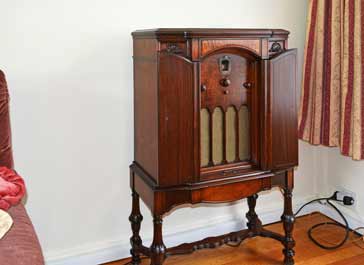
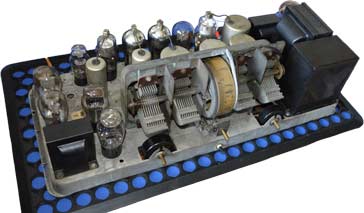
The need for the increased performance of the superhet was first felt in America where the number of broadcast and other stations started to rise. The older tuned radio frequency receivers were not up to the job, and superior selectivity and sensitivity of the superhet was needed. As a result, by the end of the 1920s most radios being bought were superhets in North America.
However in Europe the number of broadcast stations did not start to rise as rapidly until later. Even so by the mid-1930s virtually all sets in Europe as well were using the superhet principle.Further valve improvements impact superhet history
Valve technology improved again with the introduction of further electrodes into the envelope. In 1926 the tetrode valve was introduced. This valve had a second grid placed between the normal control grid and the anode. This had the effect of reducing the capacitance causing the feedback, and enabled valves to operate far more reliably than they had done before. Three years later the tetrode was improved by the introduction of the pentode. In this type of valve, yet another grid called the suppressor grid was introduced. This overcame a discontinuity in the curve of the tetrode, and enabled further improvements in their performance.
Further refinements
In 1939 hostilities arose and again it gave a new impetus to radio development. Although the superhet was well established by this time, the performance of radios in terms of selectivity, sensitivity and frequency coverage was improved as a result of the need to meet ever more exacting requirements for the war effort. During this time a number of classic communications receivers were designed. Some like the AR88 or HRO are still sought by enthusiasts today and although they are relatively large by today's standards, they can still give a good account of themselves under current crowded band conditions.
More History:
Radio history timeline
History of the radio
Ham radio history
Coherer
Crystal radio
Magnetic detector
Spark transmitter
Morse telegraph
Valve / tube history
PN junction diode invention
Transistor
Integrated circuit
Quartz crystals
Classic radios
Mobile telecoms history
Vintage mobile phones
Return to History menu . . .



